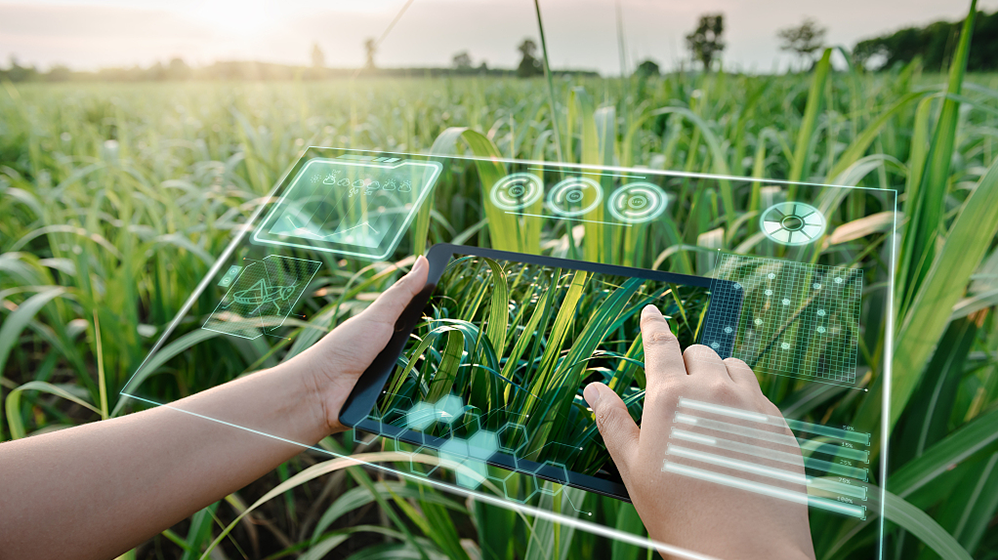Introduction
Agriculture has changed a lot in recent years. New technologies have made it more efficient, sustainable, and productive. Three key concepts driving this change are Precision Agriculture, Smart Agriculture, and Automatic Weather Stations.
Precision Agriculture and Smart Agriculture use data and technology to improve farm management. Automatic Weather Stations are important for giving accurate environmental data. This article explores their definitions, differences, benefits, and future prospects.

Precision Agriculture (PA), or precision farming, uses data to improve decisions in managing fields. This method uses technologies like GPS mapping, remote sensing, variable rate technology (VRT), and automated machines. These tools help apply water, fertilizers, and pesticides accurately.
Site-Specific Management – Adjusts farming methods based on differences in the fields.
Geospatial Technologies – Uses GPS, GIS, and drones for field mapping and analyzing.
Yield Monitoring – Collects data on crop performance to improve future planning.
Automated Machinery – Improves accuracy in planting, fertilizing, and watering.
Resource Efficiency: Reduces input wastage and lowers production costs.
Higher Yields: Improves crop productivity and quality.
Environmental Sustainability: It reduces the use of chemicals and helps lower pollution.
Data-Driven Decision-Making: Provides insights for better farm management.
Smart Agriculture (SA) is a game-changing idea. It combines the Internet of Things (IoT), Artificial Intelligence (AI), cloud computing, and real-time monitoring. This helps improve farm operations. Unlike Precision Agriculture, which focuses on optimizing specific farming tasks, Smart Agriculture employs interconnected systems to automate and optimize the entire farming ecosystem.
IoT-Enabled Sensors – Monitors soil conditions, weather patterns, and crop health.
AI and Machine Learning – Analyzes data to predict diseases, optimize irrigation, and automate farming activities.
Cloud-Based Data Storage – Provides real-time access to farm metrics and analytics.
Automation and Robotics – Utilizes smart machines, drones, and autonomous tractors for labor efficiency.
Real-Time Monitoring: Farmers can track field conditions remotely using mobile applications.
Predictive Analytics: AI-driven insights help prevent crop diseases and optimize resources.
Reduced Labor Dependency: Automation minimizes reliance on manual labor.
Climate Resilience: Smart systems adjust farming strategies based on weather predictions.
Automatic Weather Stations (AWS) are important tools for modern farming. They provide real-time weather data. This data helps with Precision Agriculture and Smart Agriculture.
These stations gather important environmental data like temperature, humidity, rainfall, wind speed, solar radiation, and soil moisture. This information helps farmers make better decisions.
Real-Time Data Collection – Continuously checks the weather and sends the data.
Integration with IoT – Connects with farm management systems for automated responses.
Climate Prediction and Alerts – Helps in early warning for extreme weather events.
Remote Access and Cloud Storage – Enables farmers to access data anytime, anywhere.
Improved Irrigation Management: Ensures efficient water usage based on real-time weather data.
Enhanced Pest and Disease Control: Identifies climate conditions favorable for disease outbreaks.
Better Yield Forecasting: Supports decision-making with accurate climate analytics.
Sustainability and Cost Reduction: Reduces water and input wastage while maximizing productivity.
| Feature | Precision Agriculture | Smart Agriculture | Automatic Weather Stations |
|---|---|---|---|
| Scope | Field-specific management | Holistic farm ecosystem management | Environmental data collection |
| Technology Used | GPS, GIS, drones, VRT | IoT, AI, Big Data, cloud computing | Weather sensors, IoT, cloud platforms |
| Automation Level | Moderate (manual intervention required) | High (autonomous and AI-driven) | Fully automated data collection |
| Main Objective | Efficient resource use and site-specific decision-making | Full-scale automation and real-time analytics | Providing accurate climate data for farming decisions |
| Data Utilization | Historical and geospatial data | Real-time and predictive analytics | Continuous meteorological monitoring |
Precision Agriculture, Smart Agriculture, and Automatic Weather Stations will keep changing the farming industry. The integration of these technologies can lead to fully automated, climate-adaptive, and resource-efficient farming. Future advancements in AI, machine learning, and blockchain will improve farm traceability. This will increase farming productivity and sustainability.
While Precision Agriculture and Smart Agriculture focus on optimizing farm operations, Automatic Weather Stations provide critical environmental data that supports both approaches. Together, these technologies represent the future of farming, ensuring higher efficiency, better sustainability, and improved resilience against climate change.
Learn how CODA Sensor solar radiation and PAR se
Discover how real-time weather station data impr
Discover how Automatic Weather Stations (AWS) ar
Contact: Molly
Phone: +86-17775769236
Tel: 86-0731-85117089
Email: molly@codasensor.com
Add: Building S5, Aux Square, Yuelu District, Changsha City, Hunan Province, China
We chat